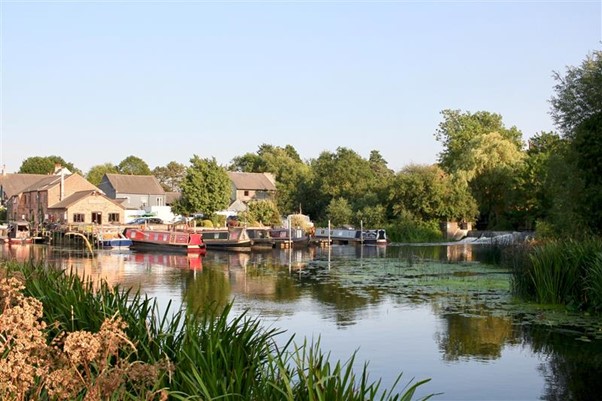
Richard Thompson, Deputy Director - Water Strategy and Partnerships, Environment Agency
On 22 April, the Environment Agency’s consultation on the next round of river basin management plans (RBMPs) closes. The plans, delivered on behalf of the Environment Secretary, are important because they set local objectives for our shared water environment, help secure investment, set conditions in environmental permits and enable sustainable growth. So, it’s fair to say that, as the challenges facing water are increasing in the face of climate change, population growth and urbanisation, they are a pretty big deal to the Environment Agency and our partners.
So, what do RBMPs actually do? Put simply, they pull together all the evidence about water in what we refer to as ‘river basin districts’ – that is, areas of the country joined together by rivers (this map shows where they are) and how organisations, stakeholders and communities will work together to improve them. For water bodies to be classed as ‘good’ under the Water Framework Directive (WFD) they must meet standards in a range of areas such as pollution, the numbers of fish and other aquatic life, and groundwater quantity. The plans are like a business case that sets out how much money is needed, who is responsible for the actions, how all the work will be done, and by who.
Measuring the health of our rivers
The Government’s 25 Year Environment Plan has set a target for 75% of waters to be as close to their natural state as soon as possible, which is based on the RBMPs. So, they are a really important process to help meet this goal and summarise billions of pounds of investment to 2027.
Waters are not in the condition we want. They are no longer improving. Only 14% of them currently meet the criteria for good ecological status under WFD, and that number has stayed stubbornly the same for several years. We are still seeing too much pollution from sewage, farming, industry and road-run off. Meanwhile new threats are seeping into waters, including microplastics and so-called forever chemicals. We do know, though, that rivers have improved in some aspects because there are other ways we can measure their health aside from the overall categories set out in the WFD.
You can read our case studies document for evidence where our work has improved things for rivers – for example, the ‘Natural Course’ project, a striking example of what can be achieved when partners came together to improve the whole of the North West’s water environment; and on the River Don in Sheffield, where salmon have returned for the first time in 150 years.
Analysis of our data also shows that:
- there is now 69% less phosphorous and 79% less ammonia in wastewater thanks to our work with water companies over the last two decades
- the 90,000 water quality sampling visits we do each year show that pollution-sensitive invertebrates are returning to rivers, a clear indicator that river quality is improving
- toxic metals like copper, lead, cadmium and mercury have also been reduced, the last two by 50% since 2008.
You can read our State of the Water Environment Indicators Report to look at the data in more detail. Under the ‘one out, all out’ requirement of the WFD it is difficult to show where things are progressing, as this isn’t always reflected in overall changes in good ecological status. Good ecological status results don’t tell the whole story of rivers.
Looking to the future
Whilst the problems facing the water environment are extremely complex, as England’s environmental regulator we are using RBMPs as a tool to set and agree local objectives for shared waters to drive forward the changes we need to see. We have made good progress in protecting and enhancing water over the last couple of decades, but we still have a long way to go. Getting to lasting solutions will take decades, but we know what the problems are, and we know how to address most of them. Those are good foundations on which to build. But if we really want to shift the dial then we will also need to think and act differently, and everyone needs to play their part. It is crucial that all those who use, rely on and are responsible for water take part in these consultations to help us take forward the right actions together to and help deliver the improvements we all need.
Take part in the online consultation before 22 April - RBMP consultation

3 comments
Comment by George McLelland posted on
I have written a provisional presentation on this subject which was put together with;
1. In depth studies.
2. Experience in several overseas countries.
2. Incorporation of my own Design’s.
The presentation is titled.
ARTERIAL INFRASTRUCTURE SYSTEM
I look forward to hearing from you
Comment by Owen Eric posted on
I like to know how the EA environment agency flood defences leaves plastic and other waste and also don't honour what they say like for like replacement of buildings when works are done, also why the EA environment agency don't give reference numbers for pollution incidents that are reported And don't even bother to investigate pollution incidents that are constantly offending unless there is a wildlife deaths or fish deaths, and Why they won't take action on large unlicensed waste disposal constantly fly tipping on the river irwell banking over years and waste bieng burnt despite All these things being reported incidents over years, not fit for purpose anymore sadly 😡
Comment by Sam posted on
Good article. The amount of freshwater is continuously being reduced due to the disruption of the water cycle by human activity. Source: https://xeero.io/water-cycle/